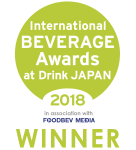Working with live cultures can be a wonderful boon to health. You can buy ready-to-drink goatsmilk kefir, or you can make your own at home. Like anything, this has both benefits and potential risks! And often when you order grains online, these risks are frequently not discussed in the literature that accompanies the grains.
In order to make sure that your home-made kefir is safe and immaculate, please observe the following food safety precautions:
- Ferment your kefir until the pH is below 3.7. This is the level at which most bacterial pathogens are unable to survive. pH meters are readily available online, and they are not prohibitively expensive. Your kefir should be dropping in pH rapidly enough that it is below 5.0 at 18 hours; this precludes the development of spoilage bacteria.
- Test your finished kefir once a month at a public health laboratory near you, to ensure that you are not re-using grains that have become contaminated. Anytime you re-use a live culture (such as kefir grains), you run the risk of bacteriophage contamination. Bacteriophages, or “phages,” as they are known, are viruses that infect bacteria. They are found in ecosystems where bacteria are commonly found, including man-made ecological niches such as food fermentation vats or jars. Bacteriophages can turn harmless bacteria into agents of disease, by transferring to them genes that produce toxic substances.1 These bacteria are then able to infect humans and cause food poisoning and other potentially deadly diseases.2 At Chuckling Goat we have our kefir regularly tested by a microbiology lab to ensure that it is free from any phage or pathogen infection. I recommend that anyone making kefir at home do the same! Otherwise you run the risk of a phage infection getting into your grains, which if you continue to use, will propagate the phage contamination. As you cannot sterilise the grains themselves, this is quite a risk for the home user who does not test their kefir for purity. If you contact the public health laboratory near you, they can explain how you can bring your kefir in for testing. As for a standard microbiolocal food safety screen, for a live culture product. (They may never have heard of kefir! ; )
- Please note that you see in this blog and on the Chuckling Goat website come from Chuckling Goat kefir which we make on the farm, and are not necessarily representative of any other kefir. Kefir grains are living organisms, with unique bio-profiles, and they are not all guaranteed to be the same. Our own kefir grains have been DNA-strained and trialed for efficacy by Aberystwyth University. I can not speak for the efficacy of any other kefir, made with other grains.














